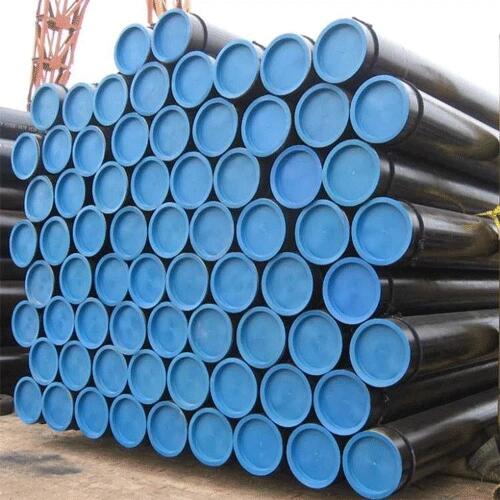Application of steel pipes in offshore engineering
Steel pipe is widely used in offshore engineering. Three types of steel pipes are generally required in the two systems of ship and ocean engineering: conventional steel pipes, structural steel pipes and special purpose steel pipes.
1. Conventional steel pipe
Different ships and ocean engineering have both conventional systems and special systems.
The service life of the ship is generally 20 years. There are many conventional systems, mainly including bilge water, ballast, drainage, injection, domestic water, fire protection, domestic sewage, air, measurement, cargo oil, tank sweeping, ventilation, inert gas, heating, tank washing, foam fire extinguishing, watering, evaporation gas, liquid level telemetry, valve remote control and other systems. Special ships also include special systems for transporting liquefied petroleum gas (LPG), liquefied natural gas (LNG), etc. The service life of steel pipes in offshore engineering shall be at least 40 years. In addition to conventional systems, there are special drilling and production equipment systems, crude oil, liquefied petroleum gas, and liquefied natural gas processing process systems in offshore engineering.
It is found through statistics that the annual consumption of pipes for ships is 5 million tons, about 500,000 pieces. The standards are GB, YB and CB, of which 70% are connected. Only a 300000 ton super large oil tanker can use tens of kilometers of steel pipes and pipe fittings, and only about 1000-1500 tons of steel pipes (including). Of course, compared with the 40000 ton hull structure, the amount of steel pipes is relatively limited. In addition, considering the same type of ship, there are many other ships to be built. The number of 300000 ton ultra large FPSO pipes exceeds 40000, and the length exceeds 100km, 3-4 times that of the same tonnage. Therefore, the shipbuilding industry has become a large user of the steel pipe industry.
2. Steel pipes in construction
In addition to the above conventional systems and special systems, steel pipes are widely used in many structures in offshore engineering, such as jackets, riser sleeves, underwater steel piles, helicopter platforms, mooring supports, flare towers, etc. This kind of steel pipe has many specifications, high materials, the same diameter, different wall thickness, different diameters, and a large number of Y, K, T type pipe joints. Their materials are E36-Z35, D36-Z35, E36 and D36. The standard of this kind of steel pipe is not YB and CB, but GB712-2000. The steel pipe is manufactured in accordance with SY/T10002-2000 Specification for Manufacturing Structural Steel Pipe formulated by China Petroleum Industry Standards Technical Committee (CPSC). As there is no specialized enterprise in China, the construction unit usually processes and shapes the steel plates after purchasing them.
3. Steel pipes for special purposes
Steel pipes for special purposes refer to steel pipes used under specific working environment and working medium.
Among them, the submarine oil pipeline is a typical special steel pipe with large demand, high strength, good corrosion resistance and small tolerance. At present, the production of submarine oil pipelines in China is still in its infancy, due to corrosion resistance, less welding materials or specifications, and expensive prices.
China's offshore crude oil needs to be transported with thermal insulation. In the past, double-layer steel pipe insulation structure was used, which was safe and reliable, but it was very uneconomical to use steel pipes as protective pipes. In addition, before offshore pipe laying operations, internal and external pipes should be welded first, which greatly reduced the efficiency of pipe laying, resulting in doubled installation costs. In the 21st century, people have introduced a concrete counterweight steel pipe. Its structure is (from inside to outside): steel pipe, epoxy powder (FBE) anticorrosive coating, polyethylene (PE) jacket pipe, polyurethane insulation layer, reinforced concrete weight layer (with steel wire mesh inside).
 8 differences between ASTM A312 304 and 316 stainless steel pipes
8 differences between ASTM A312 304 and 316 stainless steel pipes
 How to drill holes in ASTM A179 seamless steel pipes?
How to drill holes in ASTM A179 seamless steel pipes?
 What are the advantages of cold drawn ASTM A192 seamless steel pipe?
What are the advantages of cold drawn ASTM A192 seamless steel pipe?
 How to drill holes in ASTM A53 seamless steel pipes?
How to drill holes in ASTM A53 seamless steel pipes?